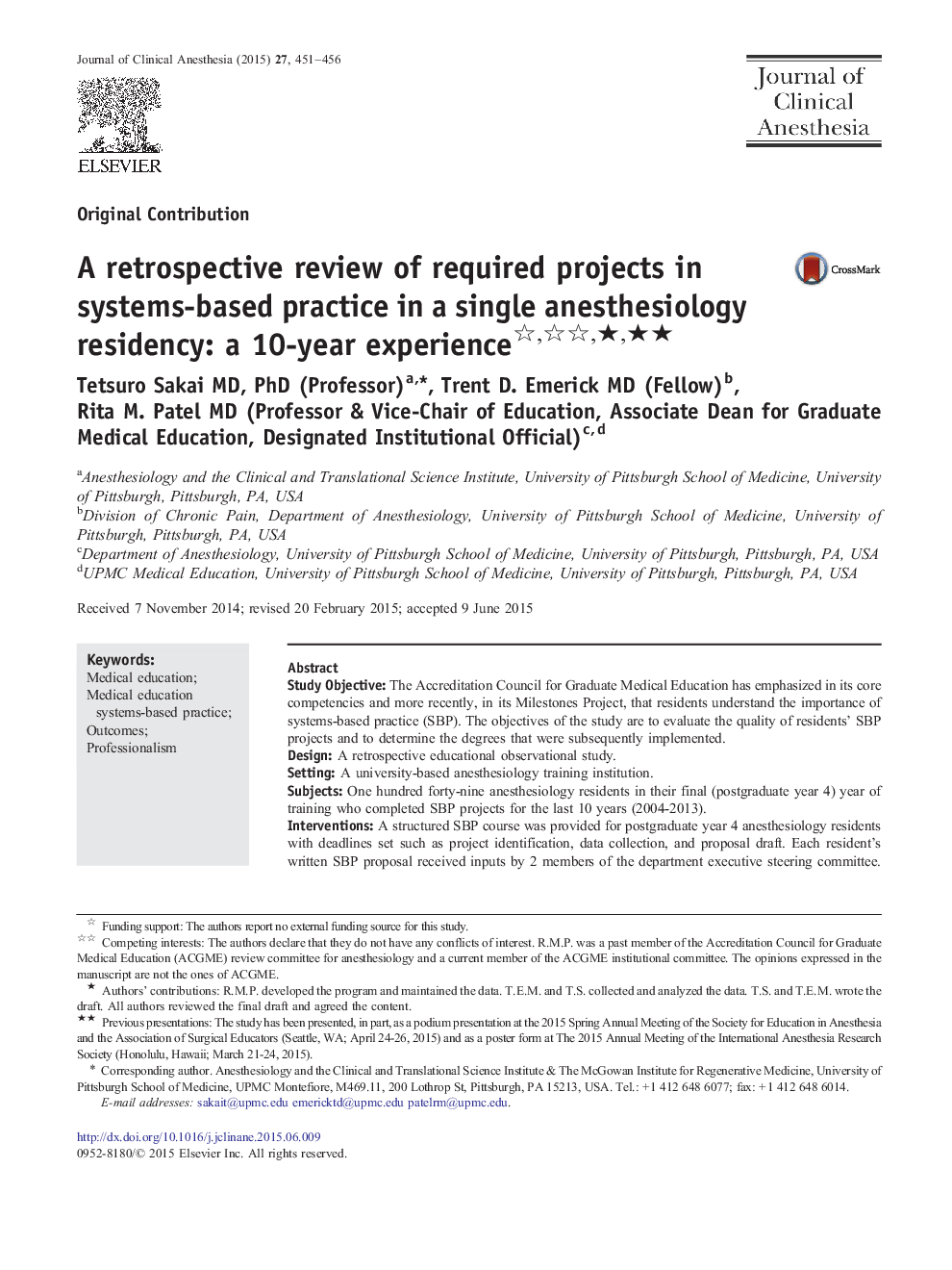| Article ID | Journal | Published Year | Pages | File Type |
|---|---|---|---|---|
| 2762219 | Journal of Clinical Anesthesia | 2015 | 6 Pages |
•Systems-based practice (SBP) is 1 of 6 core competencies by the Accreditation Council for Graduate Medical Education.•This study provides a long-term (10 years) result of SBP project.•Policy change recommendation was the most frequently chosen category.•35.6% of SBP projects were implemented in the department.
Study ObjectiveThe Accreditation Council for Graduate Medical Education has emphasized in its core competencies and more recently, in its Milestones Project, that residents understand the importance of systems-based practice (SBP). The objectives of the study are to evaluate the quality of residents' SBP projects and to determine the degrees that were subsequently implemented.DesignA retrospective educational observational study.SettingA university-based anesthesiology training institution.SubjectsOne hundred forty-nine anesthesiology residents in their final (postgraduate year 4) year of training who completed SBP projects for the last 10 years (2004-2013).InterventionsA structured SBP course was provided for postgraduate year 4 anesthesiology residents with deadlines set such as project identification, data collection, and proposal draft. Each resident's written SBP proposal received inputs by 2 members of the department executive steering committee. The SBP projects concluded with oral presentations by each resident to the department executive steering committee, who provided overall scores.MeasurementsAll SBP projects were categorized into 7 categories: safety initiatives, economic analysis, process analysis, policy change recommendations, education initiatives, teamwork/communication, and operating room efficiency. Evaluation scores using a Likert scale (1-9, where 9 is the best) were analyzed. The rate of implementation of project ideas within the department based on the presentations to the executive committee was examined.Main ResultsOf 149 projects, policy change recommendations was the most frequently chosen category (46 projects; 30.9%), followed by process analysis (36 projects; 24.2%). The overall evaluation score was 7.6 ± 0.6 (mean ± SD). A total of 53 projects (35.6%) were implemented in the department. There was no statistical difference between SBPs with implementation vs SBPs without implementation in terms of evaluation scores, year of the presentation, or categories.ConclusionsThis SBP project has given residents the opportunity to participate in a hospital system change aiming to improve efficiency and safety.
